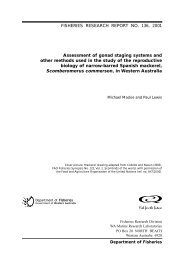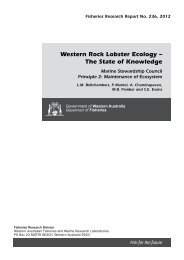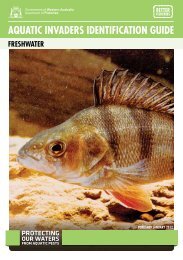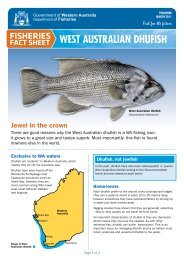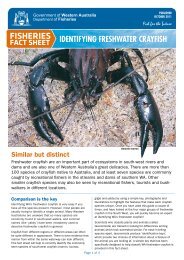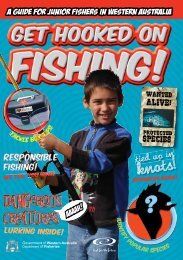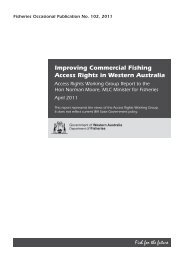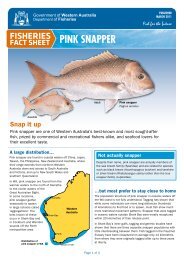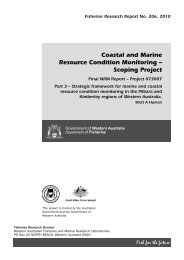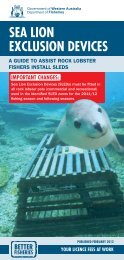Beachcombers Field Guide - Department Of Fisheries Western ...
Beachcombers Field Guide - Department Of Fisheries Western ...
Beachcombers Field Guide - Department Of Fisheries Western ...
You also want an ePaper? Increase the reach of your titles
YUMPU automatically turns print PDFs into web optimized ePapers that Google loves.
Cone shell<br />
Mollusca – Gastropoda<br />
Cones live under rocks<br />
or coral boulders, and many<br />
species bury themselves in the sand<br />
with just their siphons extended like<br />
snorkels. The water sucked in through<br />
their siphon carries oxygen as well as the<br />
odour of prey, such as another mollusc,<br />
worm or a small fi sh. The cones can then<br />
rapidly harpoon their prey using a hollow,<br />
barbed tooth loaded with<br />
venom. Once the<br />
prey is paralysed<br />
it is usually<br />
swallowed<br />
whole.<br />
Photo: Sam Bridgwood<br />
Did you know?<br />
Although not all cones are<br />
dangerous to humans, it is best<br />
to treat them with caution. Mollusc<br />
and worm-eating cones can infl ict<br />
a painful sting but the venom of<br />
fi sh-eating cones can cause a human<br />
to suffer breathing diffi culties,<br />
paralysis or even death!



